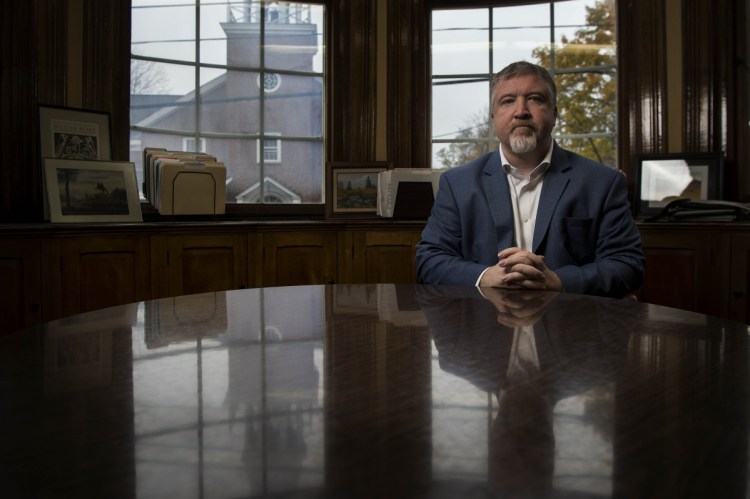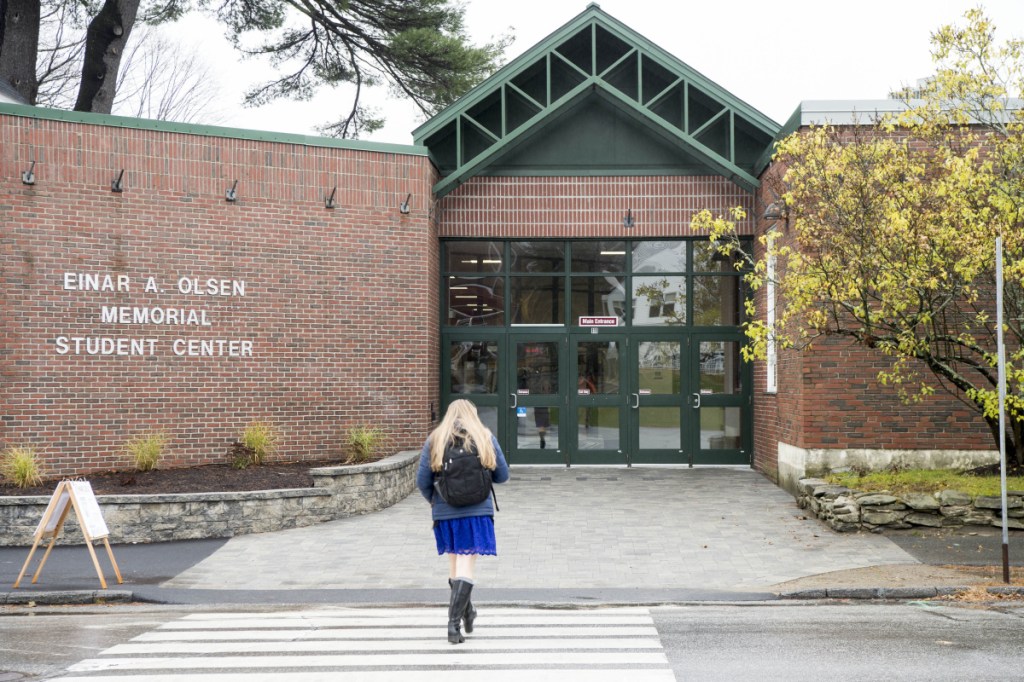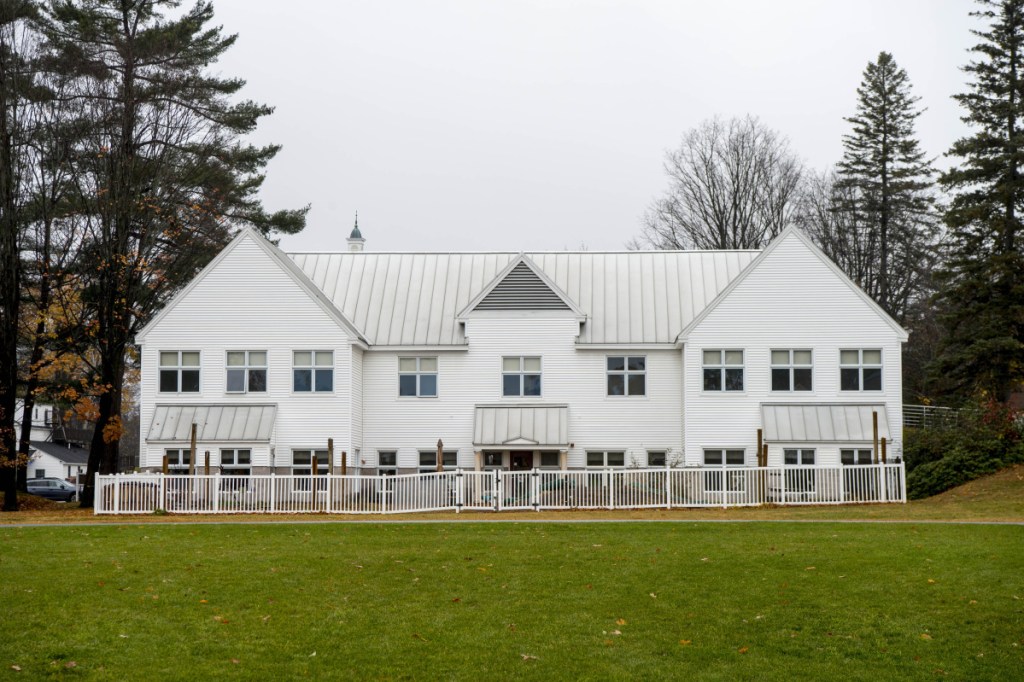FARMINGTON — The University of Maine at Farmington’s Olsen Student Center and Sweatt-Winter Childcare and Education Center could get millions of dollars in renovation and upgrades if voters approve the funding as part of a statewide referendum Tuesday.
Question 4 asks voters to approve a $49 million bond for the construction and remodeling of existing and new facilities within the University of Maine System, about $8.5 million of which would be allocated for UMF.
The money would be split between the Olsen Student Center and the Sweatt-Winter Childcare and Education Center, both of which need upgrades, UMF Interim President Eric Brown said.
“We have so many needs on this campus and decided to try and do a little bit of both,” Brown said. “We’ve targeted the student center, which is really a community center here in Franklin County, as well as focus on expanding the Sweatt-Winter child care program.”
The student center last underwent improvements in 2017, when the Snack Bar, now called The Beaver Lodge, was renovated; South Dining Hall received a new floor, paint and appliances; and the hallway got new carpeting, ceilings, lighting and painting.
Brown said the next upgrades would focus on some of the more heavily used rooms, North Dining Hall and facade work on the building.
At the same time, the money for the Sweatt-Winter Childcare and Education Center could go toward renovations or could be leveraged for a larger re-build of the center. The last upgrades to the center occurred in 2015, when new flooring and ceilings were put in because of water damage.
The university recently announced a $3,500 grant from the Kennebec Valley Community Action Program to support early-childhood education and nature-based learning, and Brown said UMF is looking to continue to grow both the facilities and the curriculum.
The center serves as a working child care facility as well as a training area for pre-service teachers. “They have a very innovative department and they’re doing a lot with nature-based learning,” Brown said. “We’re wanting to infuse new technology into the space as a step towards creating a better environment for the kids and their families.”
If approved, a bulk of the $49 million total in bond money would go to the University of Southern Maine, which would get about $26 million for upgrades to include a new engineering laboratory, the retrofitting of computer laboratories and a new career center to help students connect with internships, jobs or research help.
Some of the money also would go toward expanding nursing programs on several campuses, including USM and a facility for a new nursing program in Presque Isle, as the university system seeks to address a projected statewide nursing shortage.
The university system has been campaigning for the bond, but Brown said there has been some “counterrhetoric” from those who question the value of higher education or who have become disillusioned by a growing student debt crisis across the country.
At the same time, he said, state schools such as UMF need to become more competitive with smaller private schools such as Thomas College, Husson University and Saint Joseph’s College of Maine, all of which have grown quickly over the last few decades.
Other liberal arts schools in Maine, such as Colby College, are investing millions in new buildings and athletic facilities.
“We’re at a point where, I think, for students who come visit here, we look a little bit quaint, a little bit outdated,” Brown said. “I think it’s certainly partly about giving the opportunity to our community and our school, but there’s also a competitive part. That’s the reality of it.”
The bond is one of two higher education bonds voters are being asked to consider next week, including Question 5, which proposes a $15 million bond for the Maine Community College System. Both require the systems to match the amount of the bond with public or private funds.
“I do think this is also kind of a broader referendum about how people feel right now about higher ed and what we’re doing in the state,” Brown said. “It’s about how we serve Maine communities, Maine students and a lot of students from out-of-state too. That has a big impact on the economy.
“I think there’s a broader view of this question that goes beyond just, ‘Do we need help with our facilities?’ Yes, absolutely we do, but it’s also, ‘To what degree is the state willing to back the mission we have?'”
Rachel Ohm — 612-2368
Twitter: @rachel_ohm
Send questions/comments to the editors.






Comments are no longer available on this story